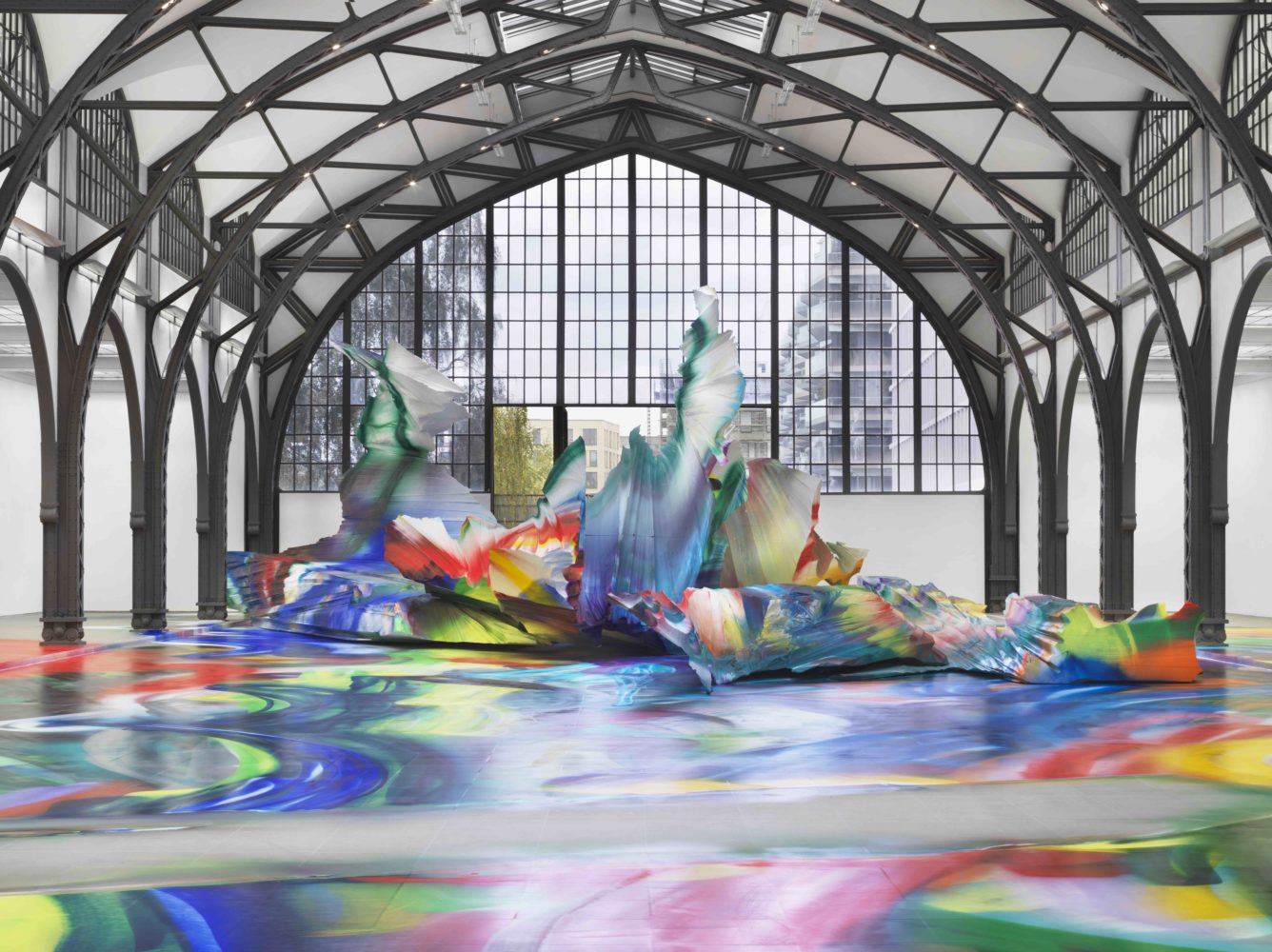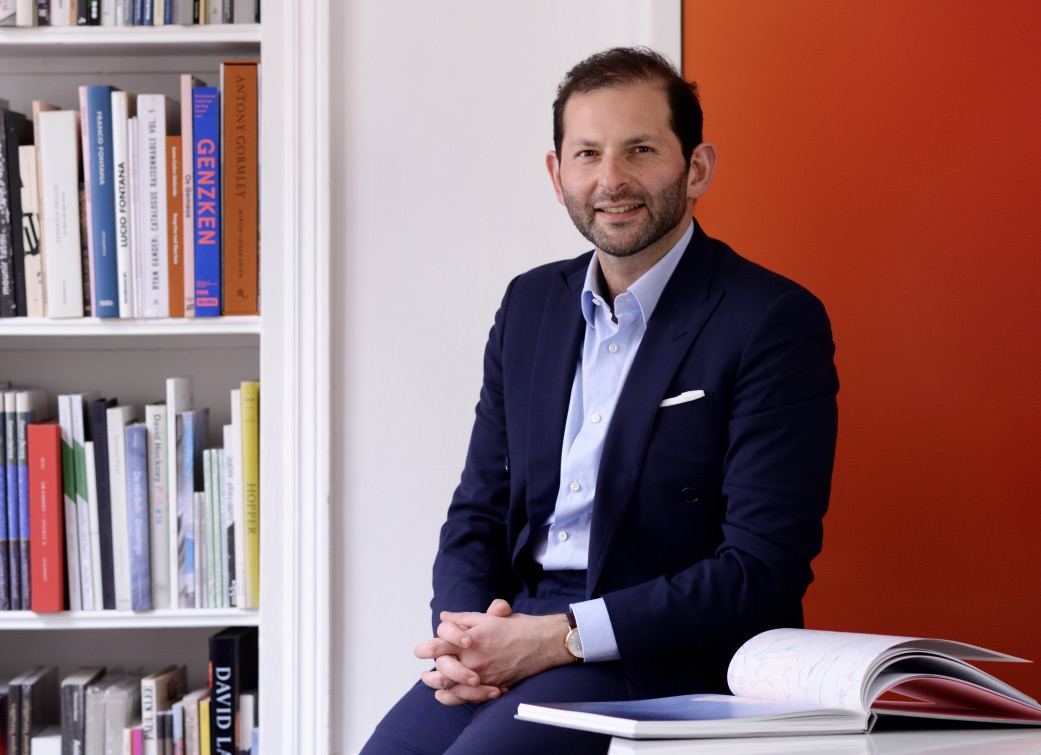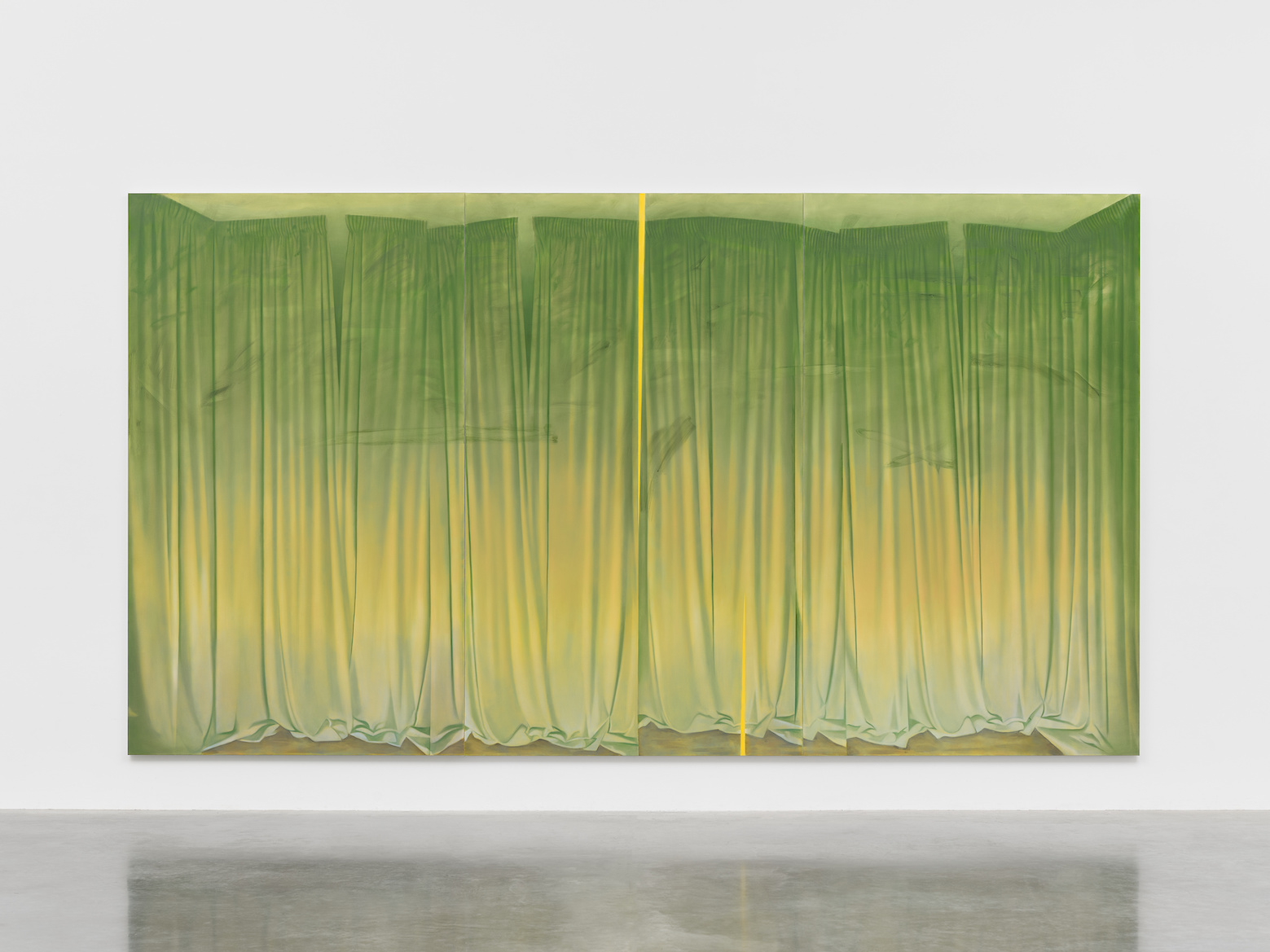Last fall, for the first time in his career, artist Glenn Ligon created paintings rendering a text in full. It was James Baldwin’s “Stranger in the Village,” an essay he’d worked with for nearly two decades, but never at this scale. With show postponements due to the pandemic and a new, larger studio, Ligon was able to make these monumental paintings that felt, at least initially to Ligon, like the end of an investigation. But as he told Whitewall, he may have spoken too soon, as the pull of words by writers like Baldwin, Ralph Ellison, and Zora Neale Hurston remains undoubtedly magnetic and rich.
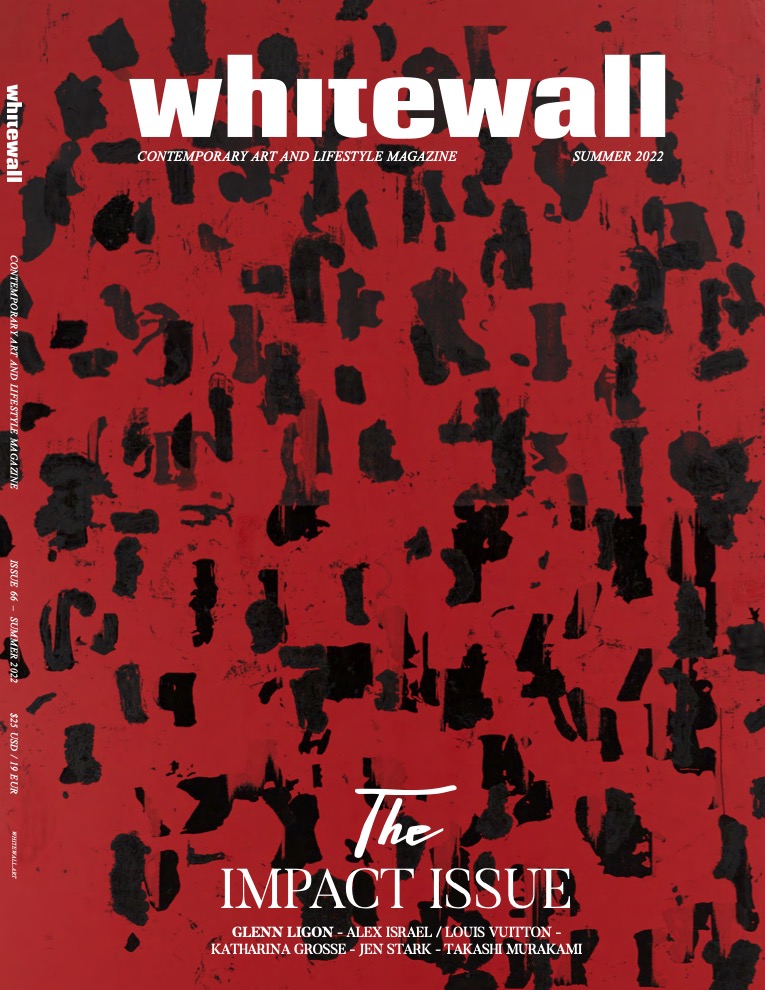
Glenn Ligon, “Debris Field (Red) #17,” 2020 – 2021, for the cover of Whitewall’s Summer 2022 Impact Issue; photo by Thomas Barratt, © Glenn Ligon, courtesy of the artist, Hauser & Wirth, New York, Regen Projects, Los Angeles, Thomas Dane Gallery, London, and Chantal Crousel, Paris.
Accompanying that work in “It’s Always a Little Bit Not Yet” at Hauser & Wirth in New York (November 16–December 23, 2021) were new paintings from his recent series “Debris Field,” where Ligon pushes toward abstraction even further. Here, instead of words and a guiding text, it’s the form of letters themselves. He’s looking at making the intangible tangible on canvas, as well as neon, exploring the form and spelling of sounds in language, touching upon our current lack of trust in the written word, and perhaps suggesting a new form of language altogether.
Ligon, whose solo show “Post-Noir” is on view at Carré d’Art in Nîmes, France, June 24–November 20, 2022, spoke with Whitewall about moving toward abstraction and capturing the studio process full of starts, stops, and friendships.
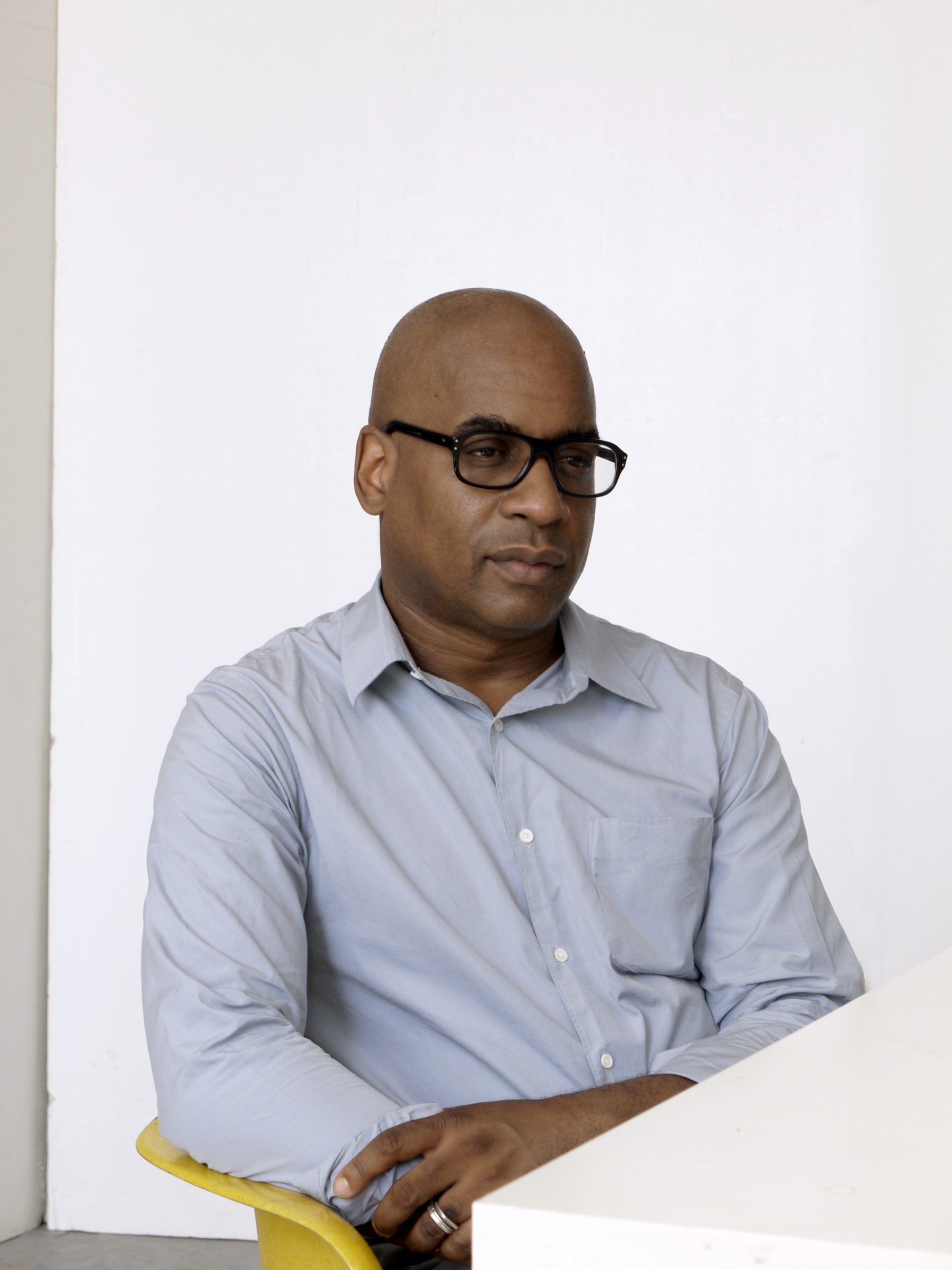
Portrait of Glenn Ligon by Paul Mpagi Sepuya, courtesy of the artist and Hauser & Wirth.
WHITEWALL: Your show last fall, “It’s Always a Little Bit Not Yet,” and the recent show at Thomas Dane Gallery, “An Open Letter” (February 4–April 2, 2022), featured new paintings in your “Debris Field” series. What was the starting point for this series? What prompted the move from words to the form of letters?
GLENN LIGON: It started about five or six years ago when I was working on a series of ink drawings using plastic letter stencils. I realized that ink doesn’t really hold its shape if you draw it through a stencil. I became interested in the resulting shapes, the abstracted letterforms.
WW: Are they connected to any guiding text?
GL: They don’t start with any text—they start with the letters themselves and the movement toward abstraction, which is always a part of my work. The text paintings always move toward a kind of abstraction. This is just starting with the letters themselves, rather than a specific text.
My text paintings have always been quite structured. They start at the Top left and go to the bottom right. They use an existing text; they follow the rules of punctuation, hyphenation, left to right. These are quite different in that they are much more improvisational. They are much more about responding to the compositional needs of the particular canvas. I can flip the images upside down, reverse them, stencil on top of them. This way of working is much more “free.” Even though it’s within a very confined system, there are a limited amount of marks that I can make because I’m using letter stencils and a silkscreen.
WW: Without that guiding text, do you think it’s a bit freeing for the viewer as well?
GL: It’s hard to know—each viewer is different. I think it opens the possibility of thinking about, what does it mean to have a new language? Or create a new language? Or what does it mean that letters have become so degraded that they are hard to read or hard to decipher? We’re at a moment when it’s very hard to believe what we read. It’s very hard to establish certainty or fact. I think these paintings, in some ways, are responding to that. At the same time, they’re responding to the need and the necessity for a new language—a new way of thinking about language.
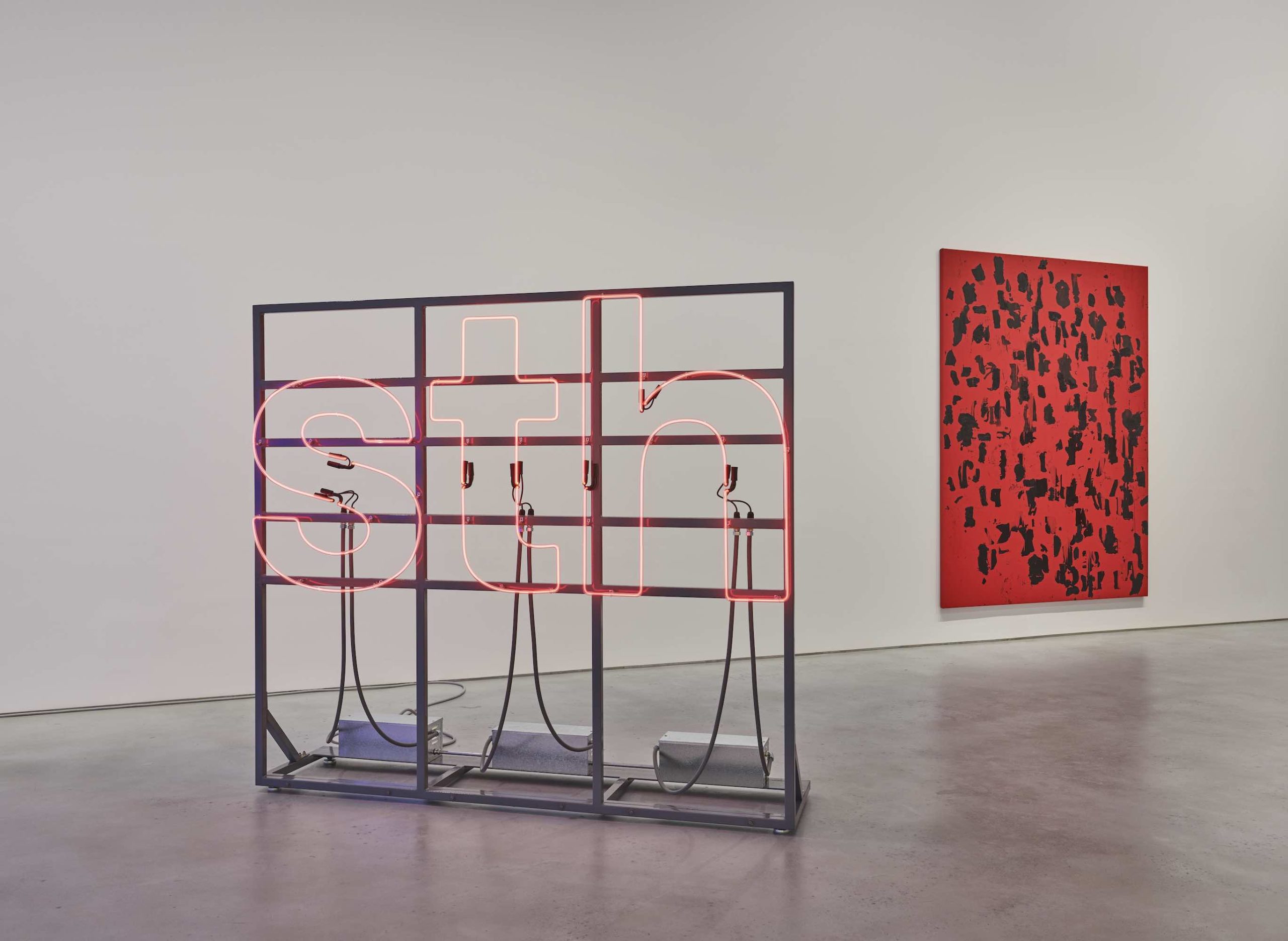
Installation view of “Glenn Ligon. It’s Always a Little Bit Not Yet” at Hauser & Wirth New York, 542 West 22nd Street, 2021, photo by Thomas Barratt, © Glenn Ligon, courtesy of the artist, Hauser & Wirth, New York, Regen Projects, Los Angeles, Thomas Dane Gallery, London, and Chantal Crousel, Paris.
WW: Some of the “Debris Field” paintings have a red background. How are you thinking about color in this series?
GL: The addition of background color changes the trajectory. Red has a long history in painting—Warhol’s “Car Crashes,” or Suprematism paintings from Russia. Red is also the color of stop signs, the signal for danger, the signal for transgression. All of those meanings accrue to a painting with a red background, and that felt very different than paintings with a white background. Black shapes on a red background shift the meaning.
WW: You’ve said this series is the closest to the abstraction you were working toward in your earliest paintings. Do you see it as full-circle or a progression?
GL: In a way, it’s closer to the compositional strategies that I was thinking about, Abstract Expressionism, except that I’m not using any brushes here. I’m using stencils. When I was in college or just out of college, I was deeply invested in painting like Cy Twombly or de Kooning—when I was a brush wielder. So these feel quite different for me. But they also, because they demand more thinking about the paintings in terms of composition, aren’t as rigidly structured as the other text paintings. They remind me of the moment when I was deeply invested and making Abstract Expressionist kinds of paintings.
WW: You had a few neon pieces in the Hauser & Wirth show. Has working on these “Debris Field” paintings, working with the letterform, impacted what you would want to do in neon?
GL: One of the things about the neon that was in the Hauser show, which is called “Triangle Trade,” was the idea of text expressing sound, not words. It was about the sound of teeth sucking that is all over the African diaspora, which is the sound of a kind of disapproval. Because it’s a sound, and it appears in the Caribbean, you find it in Africa, you find it in France; there’s no consensus on how to spell that sound. So I became very interested in moving my neons toward the idea of sound, as well as the meaning of those words, and the lack of agreement about how to write these sounds down.
And I think that’s related to the “Debris Field” paintings in that sound is an abstraction, but I’m making these very layered, dense canvases. So it’s sort of making abstraction very tangible on the surface of the canvas—this back-and-forth between the ephemeral and tangible.
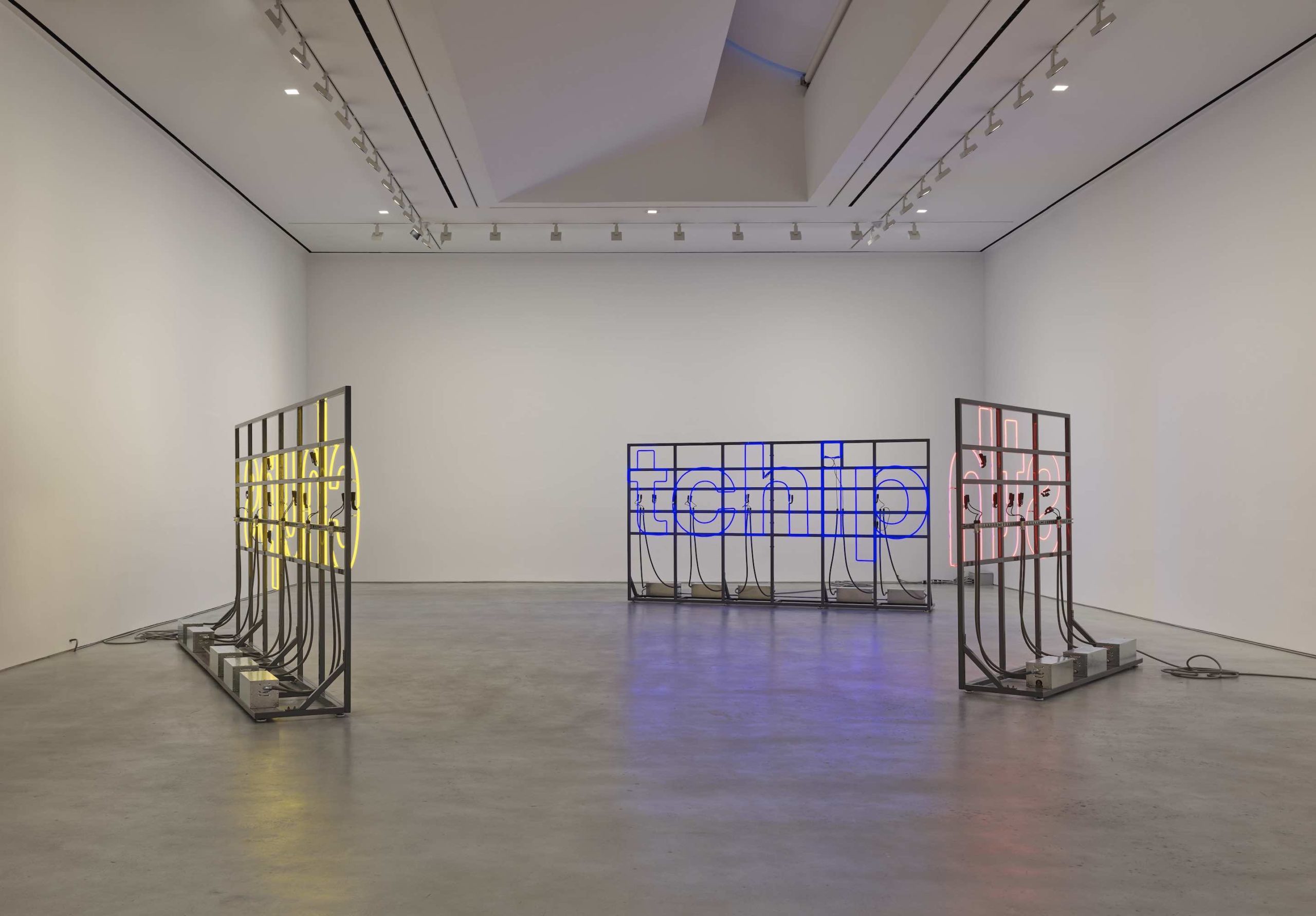
Installation view of “Glenn Ligon. It’s Always a Little Bit Not Yet” at Hauser & Wirth New York, 542 West 22nd Street, 2021, photo by Thomas Barratt, © Glenn Ligon, courtesy of the artist, Hauser & Wirth, New York, Regen Projects, Los Angeles, Thomas Dane Gallery, London, and Chantal Crousel, Paris.
WW: “It’s Always a Little Bit Not Yet” was centered on your largest works to date, which featured James Baldwin’s “Stranger in the Village” essay in full. While you’ve worked with parts of this text before, this was the first time it was completely rendered. You described it as the end of an investigation for you. What did you mean by that?
GL: I think maybe I was a bit hasty in saying that in that. What I mean by “the end” was that I’ve never made paintings that used the entire text of the essay. And that came about partially because I had the time (a lot of the exhibitions I was making work for had been postponed) but also the space to make it. I didn’t have a studio until very recently where I could make a painting like that.
I’ve been making paintings using that text for almost two decades. So it’s interesting to me, in a way, to have made paintings now that use the entire text of an essay. A younger artist would have started there. It took me twenty years to work up to it.
WW: So, once you had the space and time, what was it like?
GL: The paintings take months to make. That commitment was interesting. Once they are on the wall it’s hard to move them—you have to commit. But the process was super interesting to me. I think partially because Baldwin’s text is so rich and panoramic in its scope. It’s always a pleasure to think about it again, reread it. And I was also looking at texts written by other writers, like Teju Cole, who wrote a lovely essay in The New Yorker about going to the village that Baldwin lived in in the mid-fifties and thinking about, what does it mean to be a stranger now?
It was about using a text that still has a lot to say to me, that could be reread over and over again, but also the challenge of making a painting that big and how different that was from other kinds of paintings that I’ve been making. I am deeply engaged with the text itself, so the idea of using the entire text was important to me.
WW: That show was also accompanied by the book Work, Work, Work, Work, Work, Work. In a conversation with Gregg Bordowitz, you described how the images document work in your studio that may have since been put away or even thrown out. And also the taking of images on your phone for yourself, to document how you make a work in order to do it again. What made you interested in sharing your studio process in this way?
GL: It was a kind of transparency about the studio process. A lot of times artists present their work as only complete, full-formed—there is no process. I was interested in showing people all the missteps and the half-finished things and the things that they will never see because they got thrown out. I think that’s interesting. I’m always curious when I visit friends’ studios to see the things that they think are failures or half-finished things; I find that very inspiring. It was about that and just documenting the studio over time. Often I take pictures of things in process so I can remember how I made them, where they started, and what the process was.
There is a beautiful long poem by Gregg Bordowitz, a dear friend whom I invited to the studio many times over the last decade or so. He’s responding to what he saw in the studio and made a series of haikus, not as an illustration, but as a separate text that’s about process and making.
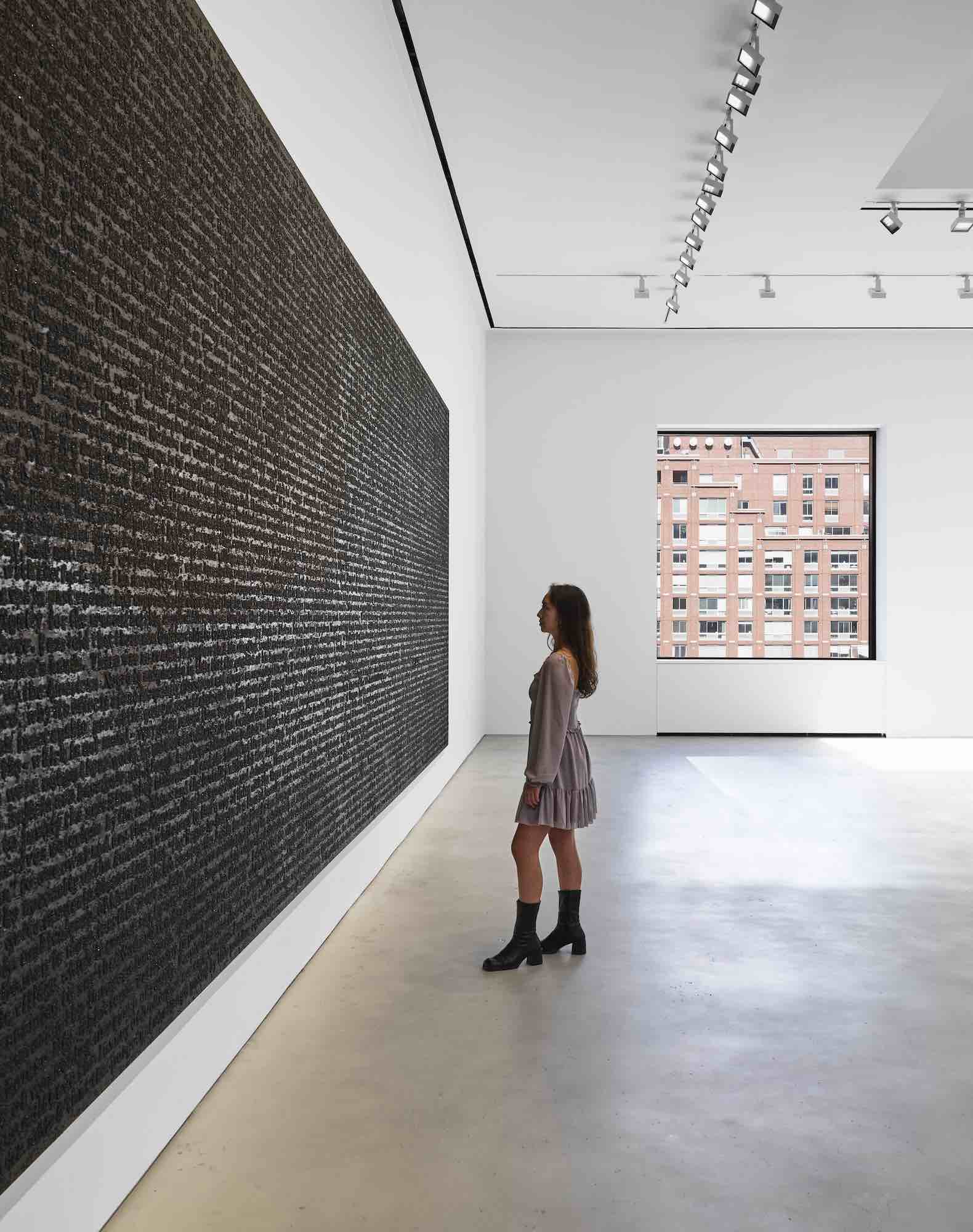
Installation view of “Glenn Ligon. It’s Always a Little Bit Not Yet” at Hauser & Wirth New York, 542 West 22nd Street, 2021, photo by Thomas Barratt, © Glenn Ligon, courtesy of the artist, Hauser & Wirth, New York, Regen Projects, Los Angeles, Thomas Dane Gallery, London, and Chantal Crousel, Paris.
WW: And it’s not just the work—it’s the visitors and people that fill it. It’s such a lively depiction of an artist’s studio.
GL: You have friends over, you hang out with people, you’re looking at other artworks. I wanted all of that to be part of the documentation that’s in the book.
WW: And speaking of process and things that don’t make it, is it hard for you to throw things out that aren’t working?
GL: I probably get rid of half of the things I’m working on because they don’t work. It may take a while to figure that out, and it’s hard to invest a lot of time and energy into something and then let it go, but I think the work is usually stronger when one can do that. But I also rely on friends to help me do that. I have a friend, Byron Kim, who has a studio in the same building, and we call them our “five-minute critiques.” We come over and assess, “Should I keep going, or does it suck?” And we can usually figure that out in five minutes. But it’s a nice way to have a reality check to remember that not everything one does in one’s studio is gold. Sometimes it’s just lead and remains lead.
WW: Like what if your rendering of “Stranger in the Village” in full didn’t work after making it for months?
GL: Well, yeah, that could have happened. When I first saw the first of those paintings, I brought it to the gallery at Hauser & Wirth because it needed to be photographed. When I saw it finally stretched and on the wall, I realized it wasn’t finished. So I brought it back to the studio and worked on it some more and that got crated up and shipped. Sometimes you need to get things out of the studio to look at them.
WW: In discussing the writers or texts you’ve worked with, you’ve said that you’re drawn to things that have a second or third life, or giving them that in your work. What are you giving new life to at the moment?
GL: I’m more interested in asemic writing that has no meaning as such, and artists that have been using that, so Henri Michaux and people like that. But also concrete poetry, where there’s attention as much to the way something is put on the page as much as its meaning. I’m quite curious about the more experimental ways of using language or pushing language toward a kind of figuration. This show has been a good touchstone for me. And also thinking about artists like Julie Mehretu, who has built a vocabulary of marks in her painting that are quite abstracted in some ways, but always rooted in a kind of sense of history and place.
WW: Do you see the “Debris Field” series as a jumping-off point for that?
GL: We shall see. I’m hoping so! I’m hoping that it’s a series that leads to other things. I’m enjoying making them now, but I am also thinking about what the next steps are. It’s always a way to keep yourself fresh in the studio. What’s the next thing?
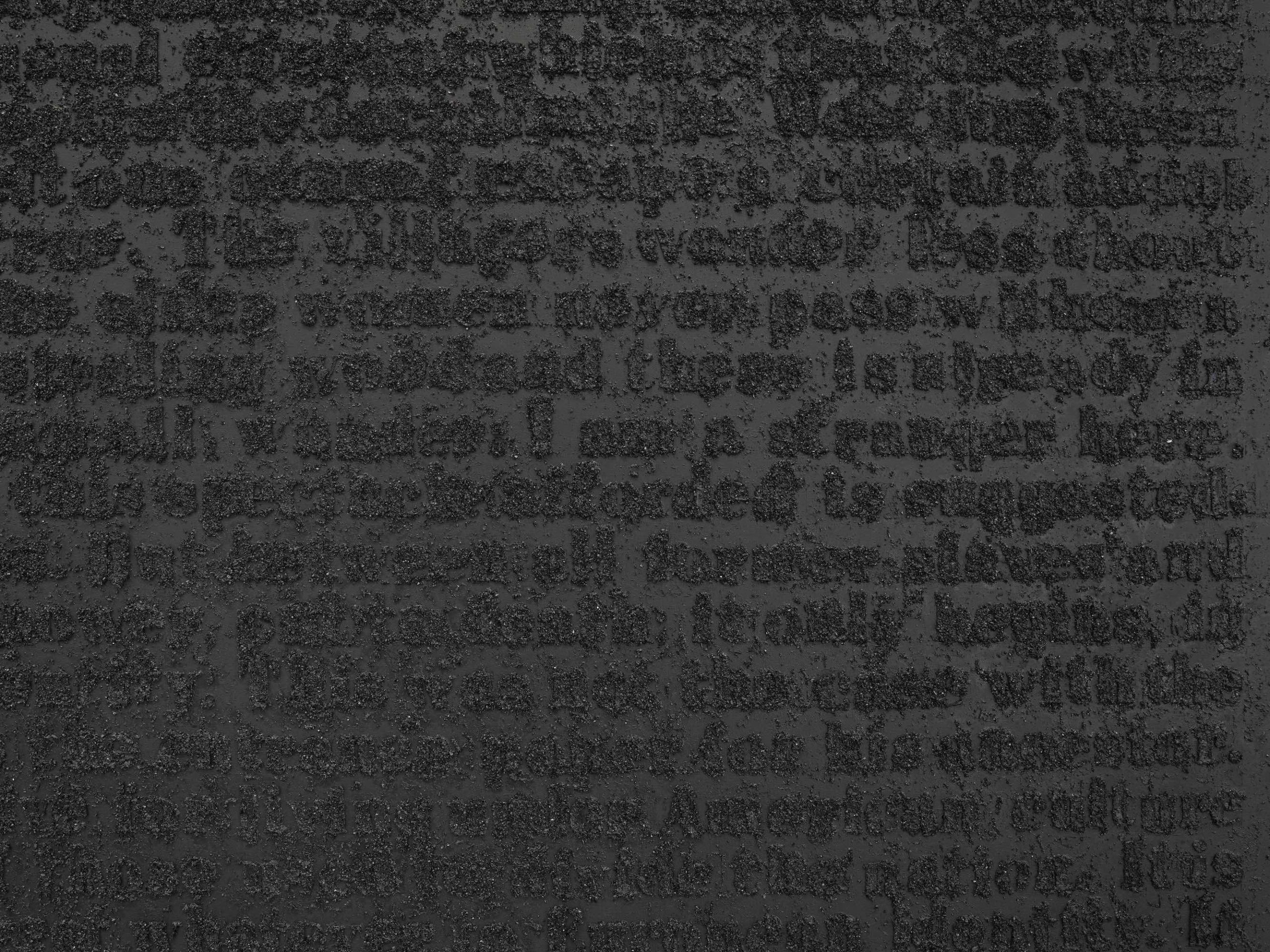
Glenn Ligon, “Stranger (Full Text) #2” (detail), 2020-2021, oil stick, gesso, acrylic, gouache and coal dust on canvas, three panels, 120 x 540 inches, photo by Thomas Barratt, © Glenn Ligon, courtesy of the artist, Hauser & Wirth, New York, Regen Projects, Los Angeles, Thomas Dane Gallery, London, and Chantal Crousel, Paris.
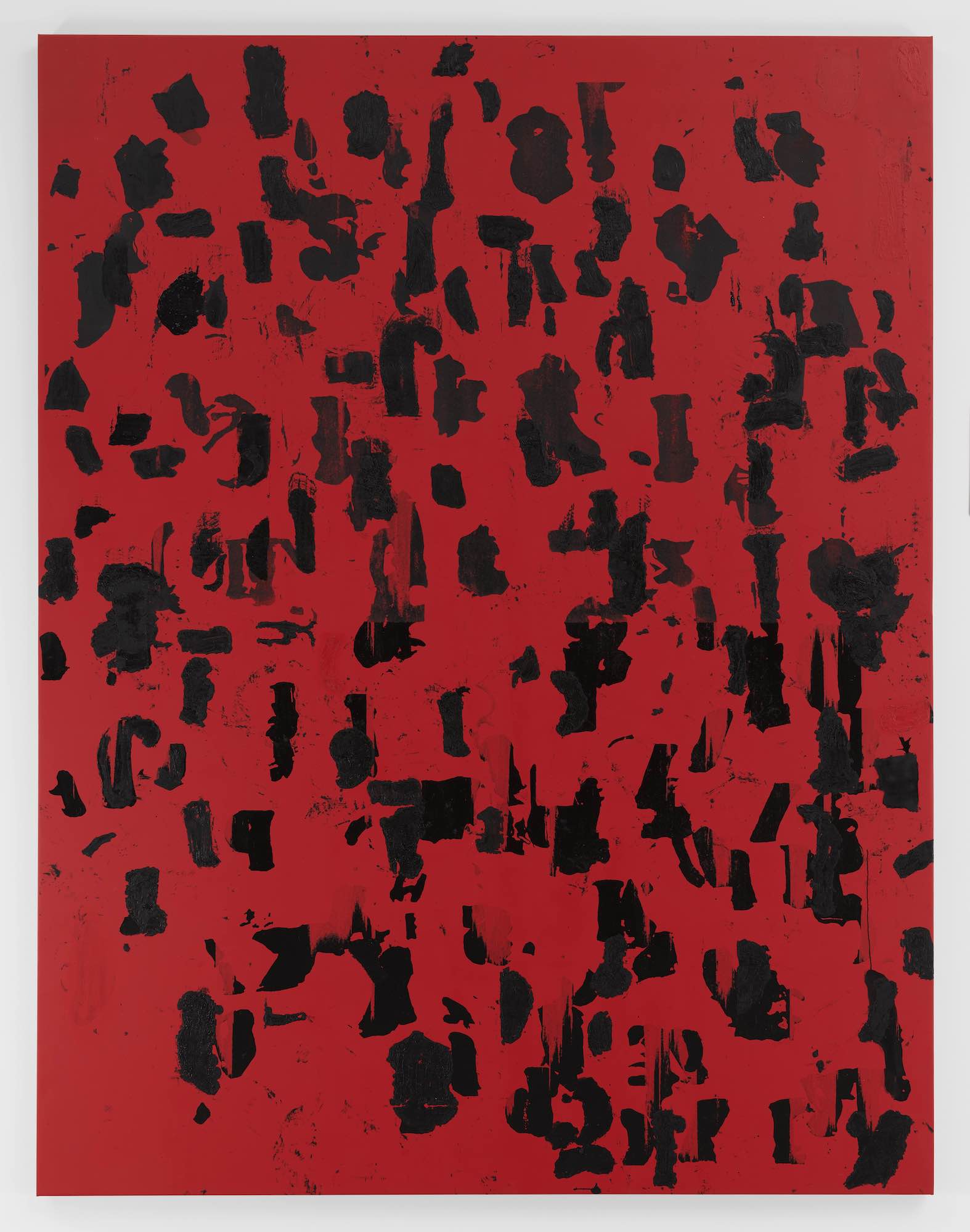
Glenn Ligon, “Debris Field (Red) #17,” 2020 – 2021, Etching ink and acrylic on canvas, 114 x 88 x 1 ¾ inches; photo by Thomas Barratt, © Glenn Ligon, courtesy of the artist, Hauser & Wirth, New York, Regen Projects, Los Angeles, Thomas Dane Gallery, London, and Chantal Crousel, Paris.
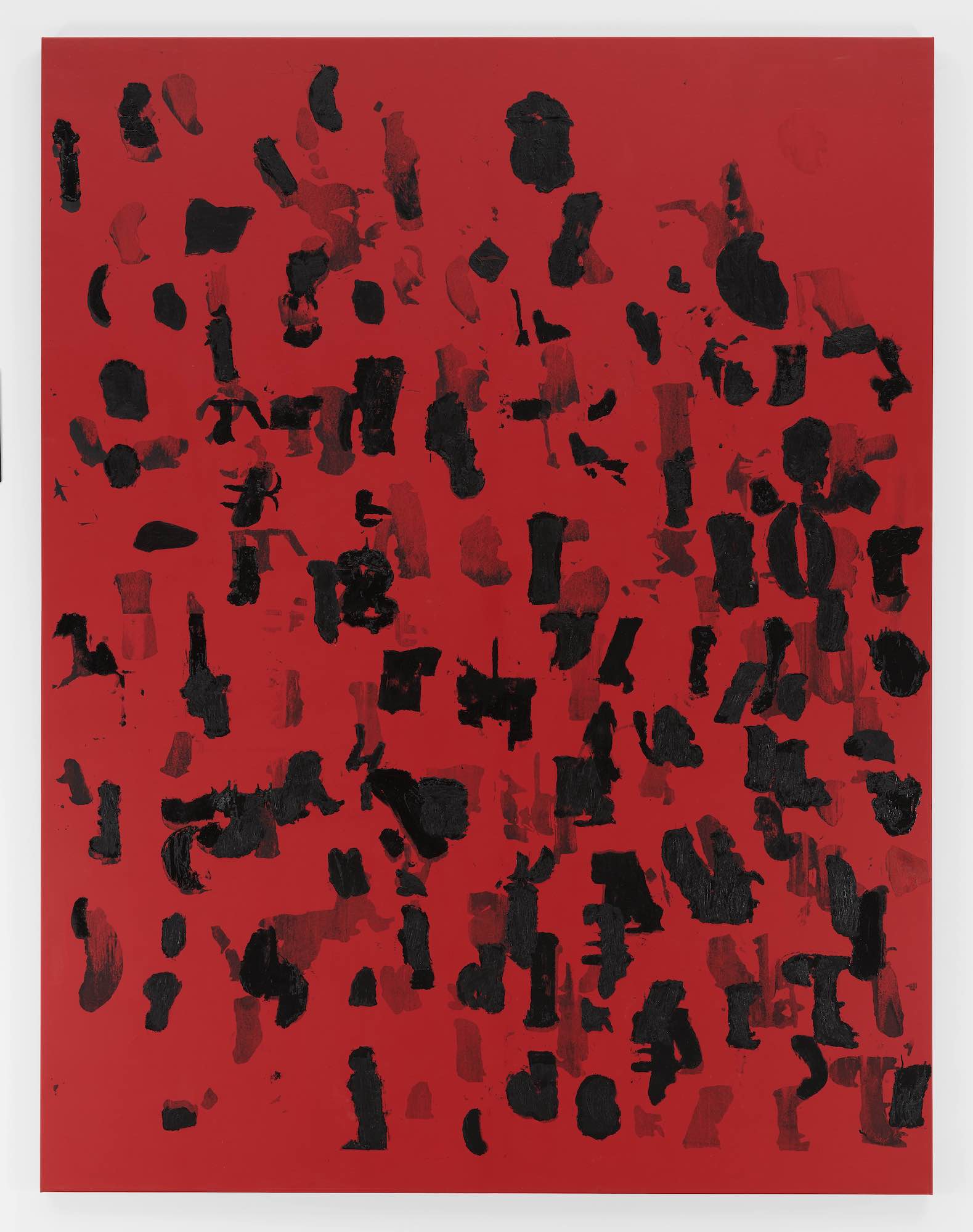
Glenn Ligon, “Debris Field (Red) #16,” 2020 – 2021, Etching ink and acrylic on canvas, 114 x 88 x 1 ¾ inches; photo by Thomas Barratt, © Glenn Ligon, courtesy of the artist, Hauser & Wirth, New York, Regen Projects, Los Angeles, Thomas Dane Gallery, London, and Chantal Crousel, Paris.




